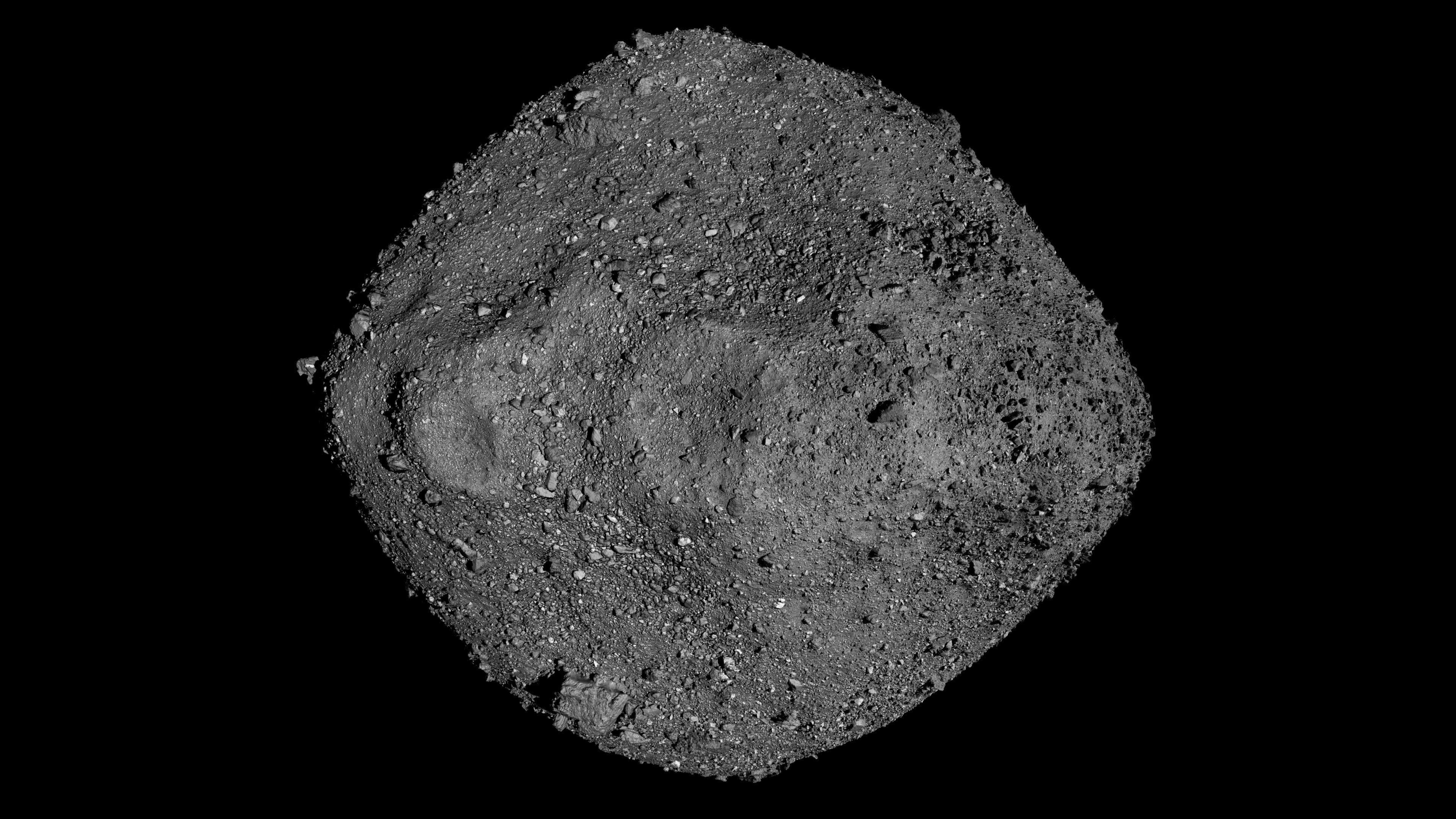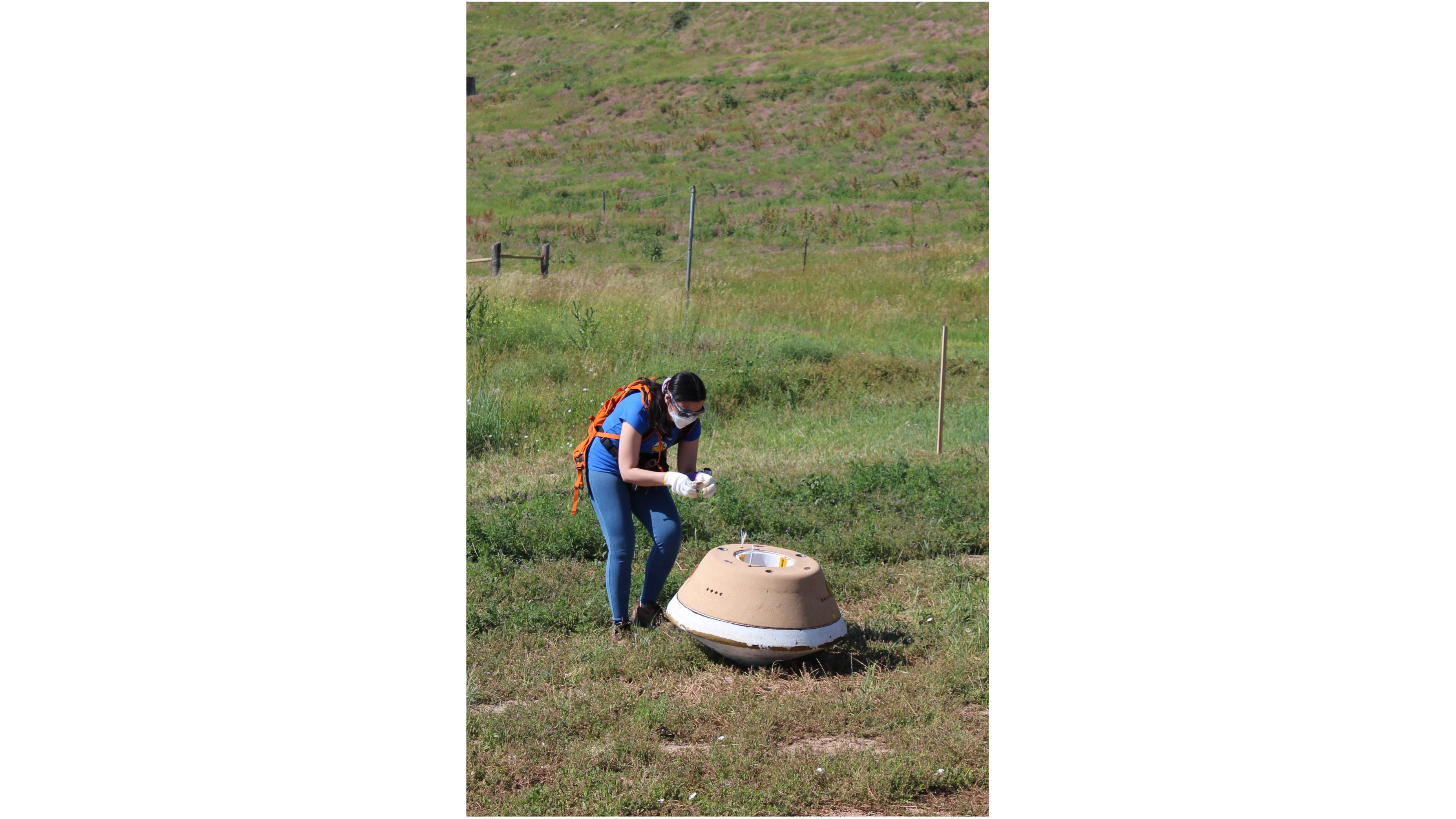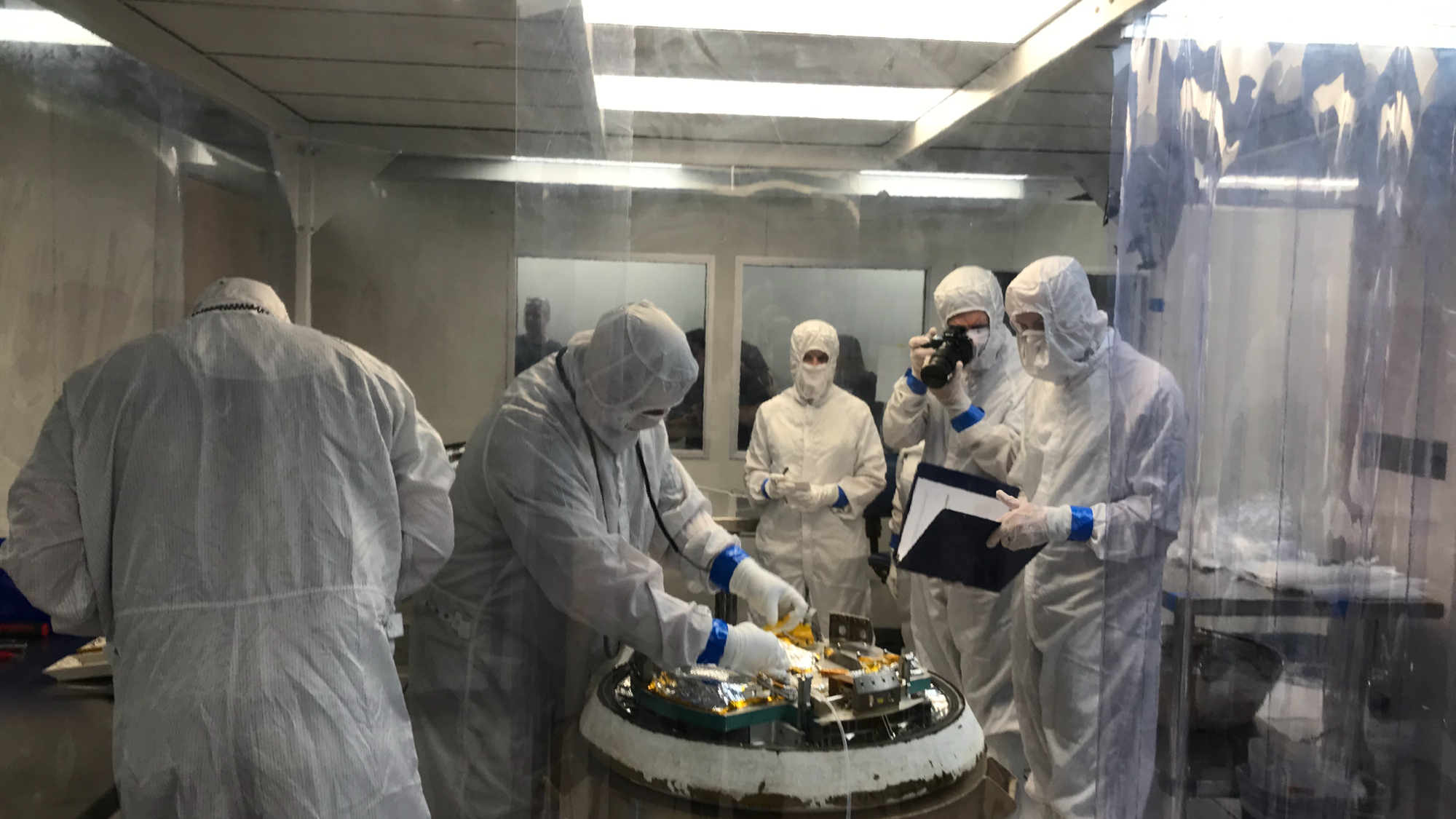Asteroid sample incoming: OSIRIS-REx team preps for September landing of Bennu bits
Touchdown will occur in Utah on Sept. 24.

LITTLETON, Colorado — As NASA's first mission to collect a sample from an asteroid screams toward Earth, recovery teams are practicing the steps needed to ensure that the extraterrestrial material arrives safely on Earth for detailed scientific inspection.
The scene is here at the Lockheed Martin Space campus, a sprawling facility populated by major aerospace expertise at the ready for deep-diving exploration of the solar system.
On June 27 and June 28, extensive practice preparations were showcased here to help prepare for arrival of the samples collected by NASA's OSIRIS-REx mission, which will occur in late September.
OSIRIS-REx ("Origins Spectral Interpretation Resource Identification Security Regolith Explorer") launched in September 2016. It snuggled up to the near-Earth asteroid Bennu in October 2020, and then used hardware at the end of its robotic arm to snag a hefty sample of the space rock.
Lockheed Martin Space built OSIRIS-REx and provides flight operations for the craft, which won't be done after it releases its Earth-bound sample capsule. The probe will then head toward a second asteroid, the potentially hazardous Apophis, on an extended mission known as OSIRIS-APEX. If all goes according to plan, the spacecraft will slip into orbit around that rocky world in 2029.
Related: Dramatic sampling shows asteroid Bennu is nothing like scientists expected
Drop zone
The OSIRIS-REx return capsule is scheduled to land on Sept. 24, in a drop zone roughly 80 miles (130 kilometers) west of Salt Lake City within the U.S. military's Utah Test and Training Range.
Breaking space news, the latest updates on rocket launches, skywatching events and more!
At capsule touchdown, a recovery team will meet and greet the container, which looks like a miniature nose cone.
In preparation for landing day, multiple simulations are being carried out to orchestrate the handling of the capsule and its precious cargo after it hits the Utah desert floor.
At the ready will be about a dozen people to do the on-site recovery of the capsule in Utah, said Richard Witherspoon, the lead for Lockheed Martin's OSIRIS-REx ground recovery operations. That specially trained group will arrive at the capsule's touchdown spot via helicopters.
"Our landing ellipse crosses both the Air Force and Army parts of the Utah Test and Training Range," Witherspoon said, "but our expected landing spot is on the Air Force side."
In total, upward of 40 individuals are to take part in the capsule recovery effort, including safety officials, sample curation team members and a cleanroom staff.
They are a first wave of specialists to prepare the retrieved capsule for another journey, which will send it via aircraft to NASA's Johnson Space Center in Houston. Once there, the bits and pieces of Bennu are to be securely housed, intensively studied and shared with scientists from around the globe.
Related: Asteroid Bennu: The squishy space rock that almost swallowed a spacecraft
Building block
OSIRIS-REx's encounter with Bennu was full of surprises.
"Looking at Bennu, not only is it a rubble pile, but it's made of very diverse components, bright and dark materials. Some seem really weak and fragile, while others seem more cemented and cohesive," said OSIRIS-REx principal investigator Dante Lauretta, of the University of Arizona in Tucson.
"The OSIRIS-REx sample analysis program shines a light on astrobiology. For me, that's the key scientific driver of the program," Lauretta told Space.com.
Indeed, Bennu is a leftover building block from our solar system's planet-formation period. And, more to Lauretta's point, that aged and weathered space rock could contain organic molecules similar to those that might have helped spur life here on Earth.
Tag, you're it
Also intrigued by Bennu is Anjani Polit, OSIRIS-REx mission implementation systems engineer, also from the University of Arizona.
"We were all surprised to see how rough and rocky it was, based on the data beforehand. We expected it to be pretty smooth," Polit said. It was a huge challenge for team members to find a sample site on Bennu, said Polit, who previously served as vice chair of the site selection board for the mission.
"There were several main things we were looking for," she said. "First of all, it was maintaining the safety of the spacecraft. There couldn't be large boulders nearby that we might tip into or back into once we had the sample. We had to find a space that was open enough that we could actually deliver the spacecraft to a spot where we could sample the asteroid."
TAGSAM is the business end of the OSIRIS-REx's robotic arm, the hardware that snared the asteroid fragments. Part of picking the sample site, said Polit, was seeing if Bennu offered up material small enough to get into TAGSAM's sample collector.
The team eventually came together on the scientific value of the selected sample location, Polit added. "It's going to be extremely exciting to first see that sample, the types of rocks and particles we saw and are now bringing back."
Dial down gravity
OSIRIS-REx is a work in progress, said Beau Bierhaus, Lockheed Martin's OSIRIS-REx TAGSAM scientist. It's a spacecraft and mission journey that already stretches over 19 years, he said, from the concept proposal to the return capsule's landing two months from now.
"What scientists get super-excited about makes things really, really hard for the engineers," said Bierhaus. "Nobody knew what the surface properties would be like on a microgravity rubble-pile asteroid. It was just totally unknown."
The surface gravity on Bennu is 100,000 times smaller than the surface gravity here on Earth. When you turn down that "gravity dial," Bierhaus said, "you don't know what the cohesive properties of that material will be like."
But OSIRIS-REx dutifully dealt with Bennu. "From leaving its orbit around Bennu, navigating to the surface, then contacting and backing away … all of that was done autonomously. We contacted the asteroid less than a meter away from our target location," Bierhaus said.
For Jason Dworkin, OSIRIS-REx project scientist at NASA's Goddard Space Flight Center in Maryland, the waiting game is nearly over.
"We've come a long way. We have a very capable spacecraft. We have a very capable sample recovery capsule. We will know more the day of," Dworkin told Space.com.
"I'm all about getting samples into the laboratory — that's my goal," he added.

Leonard David is an award-winning space journalist who has been reporting on space activities for more than 50 years. Currently writing as Space.com's Space Insider Columnist among his other projects, Leonard has authored numerous books on space exploration, Mars missions and more, with his latest being "Moon Rush: The New Space Race" published in 2019 by National Geographic. He also wrote "Mars: Our Future on the Red Planet" released in 2016 by National Geographic. Leonard has served as a correspondent for SpaceNews, Scientific American and Aerospace America for the AIAA. He has received many awards, including the first Ordway Award for Sustained Excellence in Spaceflight History in 2015 at the AAS Wernher von Braun Memorial Symposium. You can find out Leonard's latest project at his website and on Twitter.



